TESA AutoLift Self-Levelling System

If you've thought about having an automatic levelling system fitted to your motorhome but have been put off by the cost, take a look at the the AutoLift from TESA. The TESA AutoLift is different from any other motorhome levelling system in that it uses electro-mechanical jacks instead of hydraulics. The advantages of this approach include:
- Lighter weight
- No maintenance
- No possibility of fluid loss
In addition, the AutoLift system is considerably less expensive than hydraulic systems.
The AutoLift System is widely used in Italy, Germany, France, Holland and Denmark as well as other European countries. It's easy to use, reliable and effective and it can be fitted to most motorhomes including panel vans. Installation kits are available for:
- Ducato / Boxer / Relay
- Mercedes Sprinter
- Iveco
- Ford Transit
- Renault Master
If your vehicle is not listed, please enquire.
We do not supply the TESA system for self-installation but we work closely with our approved TESA installers who will ensure that the job is done correctly.
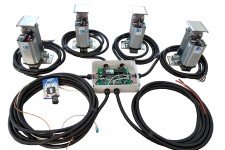
TESA AutoLift 4 Levelling System
| PRODUCT CODE: | J2401 |
|---|---|
| Article No.: | Tesa |
| Manufacturers code: | FA4 |
| Contents: | 4 x actuators; 1 x prewired control unit; 1 x fixed control panel; 1 x remote control; 4 x Jack pads and positioning rod |
| Voltage: | 12V |
| Consumption at 1000 Kg lifting force: | Approximately 12 Amps |
| Maximum load - kg: | 5000 |
| Maximum Levelling Length as a percentage: | 8% |
| Maximum levelling Width as a percentage: | 12% |
| Maximum jack extension: | 150mm |
| Product Net KG: | 48 |
| Warranty - years: | 3 |
| weight: | 48.000 |
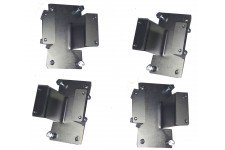
TESA Adaptor kit for Sprinter / Crafter: RWD
| PRODUCT CODE: | J2402 |
|---|---|
| Article No.: | Tesa |
| Manufacturers code: | FAKSMERC |
| Product Net KG: | 20 |
| Warranty - years: | 3 |
| weight: | 20.000 |
J2402
In Stock
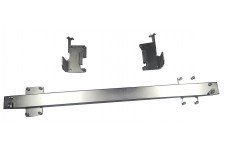
TESA Adaptor kit for X250 / X290
| PRODUCT CODE: | J2403 |
|---|---|
| Article No.: | Tesa |
| Manufacturers code: | FAKS250 |
| Product Net KG: | 15 |
| Warranty - years: | 3 |
| weight: | 15.000 |
J2403
In Stock
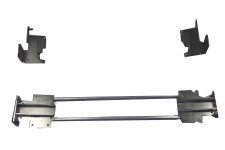
TESA Adaptor kit for AL-KO X250/290 chassis on Ducato
| PRODUCT CODE: | J2406 |
|---|---|
| Article No.: | Tesa |
| Manufacturers code: | FAKS250A |
| Product Net KG: | 20 |
| Warranty - years: | 3 |
| weight: | 20.000 |
J2406
In Stock
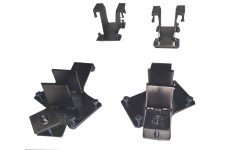
TESA Adaptor kit for Ford Transit EURO 6
| PRODUCT CODE: | J2407 |
|---|---|
| Article No.: | Tesa |
| Manufacturers code: | FAKSFOE6 |
| Product Net KG: | 15 |
| Warranty - years: | 3 |
| weight: | 15.000 |

TESA Adaptor kit for AL-KO 244 chassis on Ducato
| PRODUCT CODE: | J2409 |
|---|---|
| Article No.: | Tesa |
| Manufacturers code: | FAKS244A |
| Product Net KG: | 20 |
| Warranty - years: | 3 |
| weight: | 20.000 |
J2409
In Stock

TESA Adaptor plates for Ford Transit Before July 2014
| PRODUCT CODE: | J2410 |
|---|---|
| Article No.: | Tesa |
| Manufacturers code: | SPECIAL |
| Product Net KG: | 15 |
| Warranty - years: | 3 |
| weight: | 15.000 |
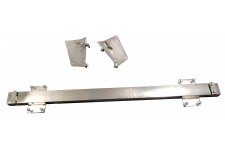
TESA Adaptor kit for X290 EURO6 (with AdBlue tank)
| PRODUCT CODE: | J2411 |
|---|---|
| Article No.: | Tesa |
| Manufacturers code: | FAKS250E6 |
| Product Net KG: | 20 |
| Warranty - years: | 3 |
| weight: | 20.000 |
J2411
In Stock
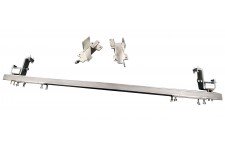
TESA Adaptor kit for Fiat Ducato 244
| PRODUCT CODE: | J2412 |
|---|---|
| Article No.: | Tesa |
| Manufacturers code: | FAKS244 |
| Product Net KG: | 20 |
| Warranty - years: | 3 |
| weight: | 20.000 |
J2412
In Stock
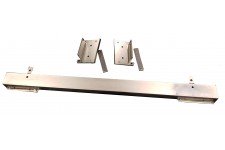
TESA Adaptor kit for Renault Master III - from 2011
| PRODUCT CODE: | J2413 |
|---|---|
| Article No.: | Tesa |
| Manufacturers code: | FAKSREMA |
| Product Net KG: | 20 |
| Warranty - years: | 3 |
| weight: | 20.000 |
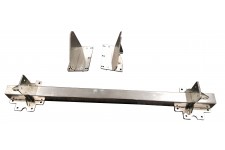
TESA Adaptor kit for Iveco Daily - from 2007
| PRODUCT CODE: | J2414 |
|---|---|
| Article No.: | Tesa |
| Manufacturers code: | FAKSIVEC |
| Product Net KG: | 20 |
| Warranty - years: | 3 |
| weight: | 20.000 |
J2414
In Stock
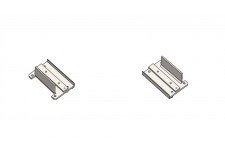
TESA Mounting Brackets for Ford Transit EURO 4 only
| PRODUCT CODE: | J2415 |
|---|---|
| Article No.: | Tesa |
| Manufacturers code: | FAKSFOE4 |
| Product Net KG: | 20 |
| Warranty - years: | 3 |
| weight: | 20.000 |
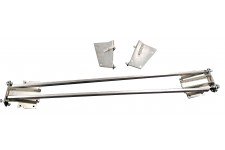
TESA Adaptor kit for X290 with AL-KO chassis & AdBlue
| PRODUCT CODE: | J2416 |
|---|---|
| Article No.: | Tesa |
| Manufacturers code: | FAKS250AE6 |
| Product Net KG: | 20 |
| Warranty - years: | 3 |
| weight: | 20.000 |
J2416
In Stock
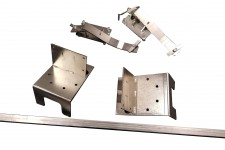
TESA Adaptor kit for Mercedes with AL-KO chassis 2020 F+R
| PRODUCT CODE: | J2417 |
|---|---|
| Article No.: | Tesa |
| Manufacturers code: | FAKSMA20 |
| Product Net KG: | 20 |
| Warranty - years: | 3 |
| weight: | 20.000 |
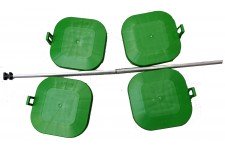
TESA Ground Pads + Positioning Rod
| PRODUCT CODE: | J2418 |
|---|---|
| Article No.: | Tesa |
| Manufacturers code: | PADS |
| Contents: | 1 x set of pads;1 x positioning rod |
| Product Net KG: | 1.590 |
| Warranty - years: | 1 |
| weight: | 20.000 |
J2418
In Stock

TESA Adaptor kit for Older Mercedes
| PRODUCT CODE: | J2419 |
|---|---|
| Article No.: | Tesa |
| Manufacturers code: | ART.COD |
| Product Net KG: | 15 |
| Warranty - years: | 1 |
| weight: | 15.000 |
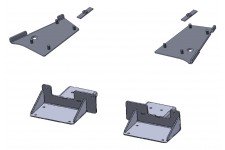
TESA Adaptor kit for X250/290 Vans with AdBlue + wheel + tan
| PRODUCT CODE: | J2432 |
|---|---|
| Article No.: | Tesa |
| Manufacturers code: | FAKS250V |
| Product Net KG: | 15.000 |
| Warranty - years: | 3 |
| weight: | 15.000 |
Recent Reviews
Quality
Value
Ease of Use
This review is from Nigel, who does not want his full name to be used,
“Self-levelling systems are unnecessary, expensive and something else to go wrong.” But in June 2022 I took a leap of faith and had a TESA Autolift 4 fitted to my 2019 Auto-sleeper Nuevo EK by Essanjay in Poole for £3,500. One was demonstrated to me last year by a contented owner who had had it for over a year and earlier this year I saw it at the NEC. RoadPro in Daventry is the sole UK importer from TESA in Montesilvano Italy. RoadPro do not fit them and only supply to professional fitters.
Supply chain problems caused by Brexit and Covid made my Autolift difficult to get hold of. I haven’t weighed the Autolift but based on TESA’s figures its weight plus the fixing brackets for my short wheel base Boxer chassis with AdBlue tank is about 65kg. RoadPro claim this is lighter than hydraulic systems; this is the case for some but not necessarily all. I have reduced the mass of my motorhome by about 25kg by removing the heavy rear corner steadies and not taking the corner steady brace, jack and levelling wedges, which also frees up storage space. My overall increase in weight is spread equally between the front and rear axles and is low down. An Autolift brochure states “power usage just 12A avg (Hydraulic 30 to 70A)”. The RoadPro website states “Amp rating: 12A” which is repeated on other UK websites. Both statements are wrong. The Autolift battery power cable is 16mm within a conduit giving it a rating of 76A and it is fitted with an 80A bolt in strip fuse.
Each of the 4 jack motors has a 10mm power cable within a conduit giving it a rating of 52A. (RoadPro says: “when lifting 1,000 Kg, each leg will draw approximately 12 Amps.”) The manual explains that the current drawn by each jack is proportional to its load with on average about 12A being drawn when lifting 1000kg and that only 2 jacks work together when lifting. The all up mass of my fully loaded motorhome with the Autolift but less occupants is about 3140kg, with about 1270kg on the front axle and 1870kg on the rear axle. Taking account of the position of my jacks in relation to the wheels, I have calculated that my Autolift’s average current should be between about 19A and 24A, depending whether the front, back or side of the motorhome is being lifted off the ground. When I replaced the 80A fuse with a 30A fuse, it didn’t blow which confirms my maximum current is less than 30A.
Two jacks each lifting their maximum stated dynamic load of 2000kg, i.e. 4000kg, should draw on average about 48A but this would be a heavy motorhome. Elevation typically takes less than a minute so the Ah consumed should be small compared to the useable capacity of a fully charged leisure or starter battery that is in good condition. (RoadPro says: “Using the Autolift to raise a vehicle will reduce the capacity of the battery by approximately 1 Ah”) The Autolift can be powered by either battery. Mine is powered by the leisure battery as recommended by TESA, RoadPro and at least one other fitter who I spoke to at the NEC. Their logic is there is no chance of the Autolift flattening the starter battery and if the leisure battery goes flat, the engine can be started which will generate enough charge for the leisure battery to raise the jacks into the driving position. If the Autolift is powered by the starter battery and it goes flat, it will not be possible to start the engine or raise the jacks electrically. Also, a dual battery solar regulator will recharge the leisure battery more effectively than a starter battery that’s only receiving a trickle charge. My fitter thought the Autolift should have been powered by my 95Ah starter battery due to the currents involved, its higher recharge capability and because it was more likely to be fully charged and in better condition than my 90Ah leisure battery, which could have had extensive off-grid use. I rarely go off-grid and when the time comes, I will probably replace my leisure battery with a larger NCC Class B one. The motorhome can be plugged into an EHU or the engine can be running whilst the Autolift is being used, which lessens the load on whichever battery is chosen.
When the Autolift’s 4 jacks are in their driving position they are fully retracted and folded up to the chassis where they are largely out of sight. Before the jacks are used, they are folded down from the driving position and partially extended by pressing the START button on the Autolift’s control panel. There should then be a gap between the bottom of the jacks and level ground of at least 30mm. On my motorhome the gap varies between the front and rear jacks and is dependent on how much load is being carried and its position, and how uneven and soft the ground is. Tyre pressures and the condition of the suspension will also affect it. If the gap is not big enough, the jacks will strike the ground as they are lowered. If this happens repeatedly, the gap must be increased by removing or replacing a collar on the jacks to shorten them. This had to be done to my rear jacks. I could have gone back to the fitter for them to do it but with their advice it was easier and cheaper to do it myself. All I needed was a pair of fine-toothed circlip pliers and for the rear wheels to be on the highest position of my Milenco Triple levelling wedges.
Once folded down, all four of my jacks can be extended by up to 137mm by pressing either the AUTO or MANUAL buttons. This can be described as useable extension and is the only extension that matters. The manual stated it should be 150mm and RoadPro’s website shows a figure of 160mm. I queried this with TESA and, on the advice of RoadPro, my fitter but I got no response. (RoadPro says: “150mm is correct.”) The Autolift comes with 200mm x 200mm x 25mm plastic pads to fit under the jacks on soft ground and I also carry pieces of 10mm marine ply. Using these and my maximum useable extension of 137mm, I can easily achieve elevations above each jack of at least 125mm. Taking account of the position of my jacks in relation to the wheels, 125mm over the jacks equates to about 153mm over the front wheels if raising just the front, or, about 133mm over the front wheel and about 145mm over the rear wheel if raising just a side, or, about 134mm over the rear wheels if raising just the rear. This outperforms my Fiamma Jumbo and Milenco Triple wedges, whose maximum elevations over any wheel are 110mm and 120mm respectively.
The control panel indicates which parts of the motorhome need to be elevated to level it and therefore which two jacks might need a pad. On firm ground pads are not always needed and sometimes only one jack needs a pad. If the distance between the front jacks and rear wheels or the rear jacks and front wheels is more than the motorhome’s wheelbase, the maximum fore and aft elevations above each wheel will be less than above the jacks. (This also applies to the rams on hydraulic systems.) The corresponding current and Ah consumed should also be less. The distances on my motorhome are less than its 3-metre wheelbase as the jacks are mounted between the axles. Photos of the Autolift (and hydraulic systems) show that this isn’t always the case on some motorhomes.
The AUTO levelling function works well. If it turns out to be not quite level, there is a procedure for fine tuning the level and then saving it, so it adopts the new level when the AUTO button is pressed again. If there is too much slope for the van to be levelled completely, the AUTO function will level the van as best it can. I have noticed that the jacks carrying the greatest load dig in overtime on anything other than firm ground. To some extent this happens on my drive where the gravel is deep and it happened on a hard-standing pitch which had poor footings. In these circumstances a pad has to be put under the jack to spread the load. I’m waiting to try out the Autolift on a grass pitch but I am pretty sure it will require pads, especially if it rains. It’s important to apply the handbrake before the jacks are retracted from the ground and to ensure there is nothing obstructing them when they are lowered from or raised to their driving positions. Any pads or wood must be removed before the jacks are folded up. The system will alarm if the jacks are not in their driving position when the engine is started. The alarm can be supressed for charging purposes.
Everyone should be outside the motorhome when the jacks are operated. Autolift jacks are not difficult to use but I suspect they are not as easy or fool proof as telescopic hydraulic jacks which have one stage of operation and I understand extend further with wider feet. This should reduce the need for pads but if they are needed I believe thicker ones can be used to achieve greater elevation. This should allow them to handle longer vans and pitches that are more uneven or with more slope. It should also make them a better substitute for Milenco’s largest wedges like the Trident and Quattro, which don’t fit my motorhome’s wet locker. However, the Autolift is much less expensive, when driving their jacks appear to have more ground clearance and there are no hydraulic pumps or reservoirs to locate, or, hydraulic oil to leak, replace or check. Time will tell how reliable the Autolift is. It’s been around for a while (RoadPro says: “since 2009”) so I would like to think its gremlins are ironed out. The neat control panel is fitted just inside the habitation door so that it can be operated from outside. The electronic control box is sealed and mounted high on the underside of the floor. The jacks look robust and stable. TESA claim they are galvanised and can each withstand a static load of 5000kg. This is more than the weight of most motorhomes and more than the load any levelling wedge, or seemingly hydraulic levelling ram, can take. Each motor is sealed and, on my motorhome, is working well within its maximum dynamic load.
Keeping the jacks clean appears to be the only maintenance. If there is a problem, removal or replacement of a jack/motor looks straight forward. The parts but not labour are covered by a 3-year warranty. At home we used our Fiamma wedges all the time, which was difficult on our gravel drive. This was to help drain the water system, which I do after every trip, and to stop rainwater and dew pooling on the roof. The Autolift does this with the added advantages of taking the heavy load off the tyres and suspension and providing an extra layer of security. If needed all 4 wheels can be lifted clear of the ground. It is easier to inspect and remove stones from the tyres, fit wheel covers and work under the van. Wheel changing is safer and easier and, by raising the rear of the van as recommended by Peugeot, there is more space to check or use the spare wheel.
We used our Milencos wedges on perhaps 50% of pitches which didn’t always level the motorhome. On the remaining pitches we sometimes put up with the motorhome being not quite level. We site our motorhome for the best aspect rather than levelness but we do like it to be level. We now use the Autolift all the time. Jacks with the pads should stop the tyres from sinking into soft ground and forming cups and allow traction mats to be placed easily under the drive wheels. This should lessen the chance of getting stuck on grass pitches which has happened to us 3 times in as many years. A bonus is that the jacks steady the motorhome. This makes the rear corner steadies superfluous which, due largely to the bike rack, I found awkward to use and so invariably didn’t. The main advantages though are that I can now level or elevate the motorhome on my own and see what’s going on, and I can do so more precisely, quickly and safely and without any stress. My wife is particularly relieved that she doesn’t have to guide me onto wedges anymore.
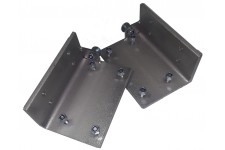
- Keith Blair, 20/12/2016
(Read all customer comments)
- Keith Owen, 16/03/2016
(Read all customer comments)
(Read all customer comments)
(Read all customer comments)